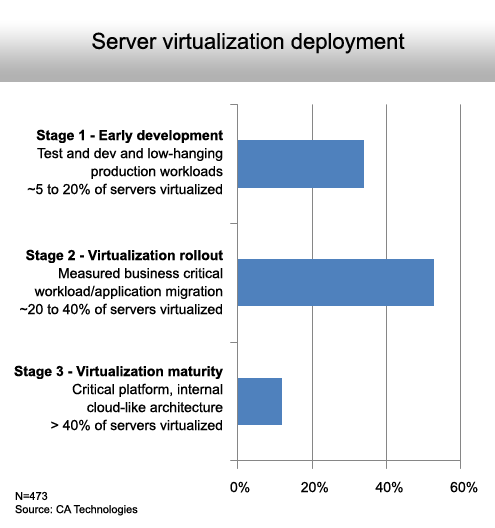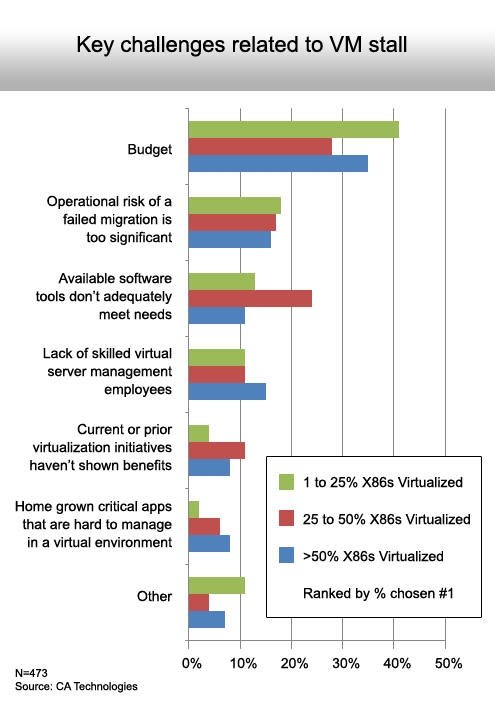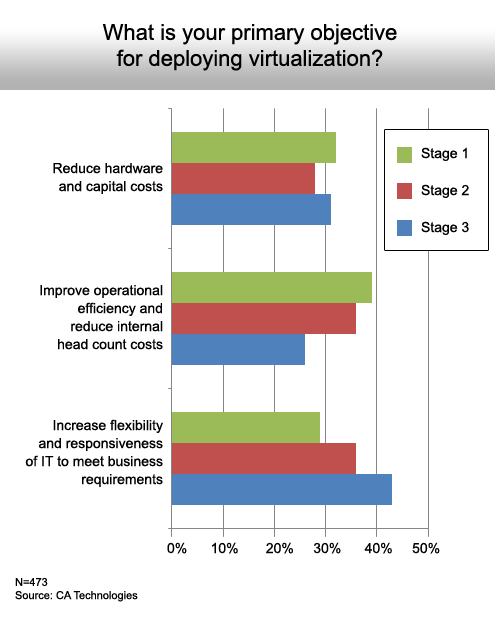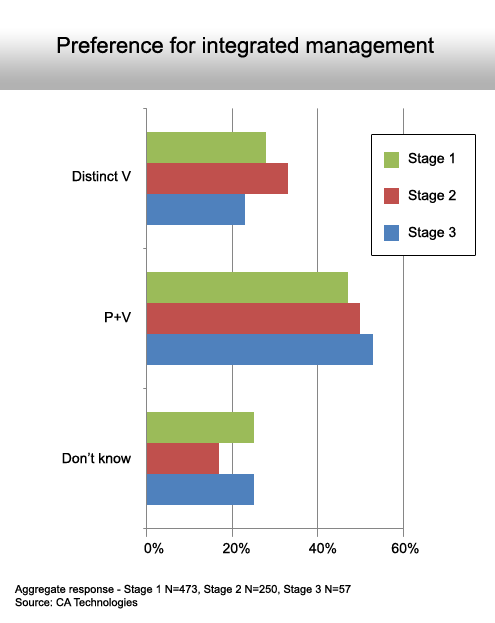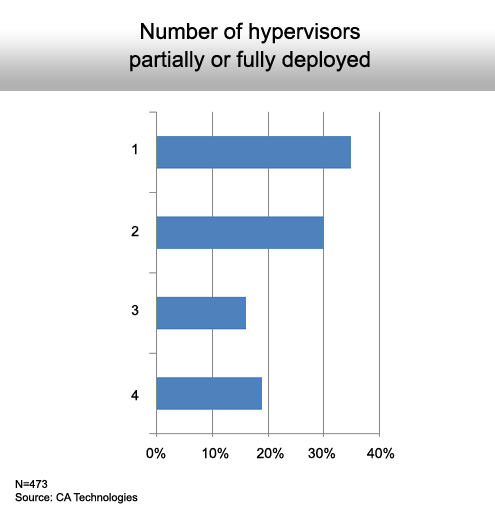The adoption of virtualization in the enterprise is starting to stall as IT organizations bump up against the limits of existing physical IT infrastructure and an inability to effectively manage large-scale deployments of virtual machines.
While this bump in the virtualization road is not wholly unexpected, how big a bump is this? In a tough economy, IT organizations have limited funds available for acquiring new physical servers that could easily run 20 or more virtual machines per processor core, and there is always resistance to new approaches to IT management that rely on increased levels of IT automation.
A new survey of 473 IT decision makers conducted by the market research firm Oliver Wyman on behalf of CA Technologies finds that the vast majority of IT organizations have applied virtualization to a relatively small number of existing physical servers. The reasons for the reluctance to deploy virtualization further span everything from complex issues such as concerns over application performance and a lack of sophisticated management tools to comparatively simple issues like insufficient amounts of available memory and storage and the tendency to throw low-cost server hardware at any given application.
According to Andi Mann, vice president of virtualization product marketing for CA Technologies, the issue with virtualization is that while it generates handsome one-time capital savings on IT infrastructure, the increased operational costs associated with managing more virtual servers eat up those savings quickly. The end result is that after IT organizations adopt virtualization, they notice that their IT costs may start to rise.
In addition, the survey finds that more IT organizations are embracing multiple hypervisor platforms. But with that diversity comes additional management challenges.
Mann says that as virtualization and cloud computing continue to evolve, these operational issues will most certainly need to be addressed by embracing higher levels of IT automation. But IT organizations are wary of IT automation because of concerns over scale and the ability to customize certain processes within an automated management framework. IT automation also represents a threat to the skill base of the IT staff.
How long it will be before IT organizations overcome these issues is anybody’s guess. There is a general shift toward more mature models for managing IT as defined by the IT Infrastructure Library (ITIL). But substantive change comes slowly to IT management, so don’t be too surprised going into 2011 if this bump in the virtualization road looks more like a hill that needs to be climbed.
Click through for survey results from CA Technologies on server virtualization stall.
Only 12 percent have virtualized more than 40 percent of their servers.
Budgets, risks, tools and skills are in short supply.
Cost and headcount are primary drivers.
The more they know, the more they want to jointly manage virtual and physical servers.
Sixty-five percent have multiple hypervisors.



